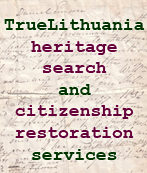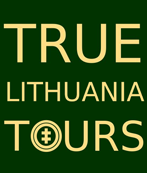Eastern Europeans (Ukrainians, Belarusians and others)
Eastern Europeans, sometimes called "Russophones", are a group of people who migrated from the areas of the former Soviet Union, besides Russians. They include Ukrainians, Belarusians, Moldovans, Central Asians, and people from the Caucasus.
These communities are all rooted in the controversial Soviet settlers - people who were sent to Lithuania from other parts of the Soviet Union between the 1940s and 1980s in order to dilute the Lithuanian population there.
After Lithuania became independent (1990) and its economy improved (~2010s), the Soviet settlers who remained were joined by new migrants from the same now-formerly Soviet countries. Nowadays, they leave their homelands because of poverty, dictatorships, or wars (e.g. Ukraine) and they choose Lithuania in particular because of its advanced economy, knowledge of Russian, common history, and (often) relatives who already live there from the Soviet occupation era. By 2022, these new migrants have surpassed the Soviet settlers and their descendants in numbers, as the Russian invasion of Ukraine led to a massive refugee flow towards Lithuania.
Neither of these Eastern European ethnicities (with the exception of Belarussians) existed in Lithuania prior to 1940 in numbers larger than 50 individuals. People from all of them share certain similar traits. Despite different origins, many are using the Russian language at home and they likely speak Russian better than Lithuanian or (at least those born before ~1975 or recent immigrants) speak no Lithuanian at all. Due to this reason, they are often grouped together with Russians under the term "Russophone", although this has been increasingly controversial.
The "Old Eastern Europeans" (Soviet settlers and their descendants) typically identify the Soviet Union positively and are more likely to be atheists than most other ethnicities.
The above traits are more pronounced in some ethnicities (Ukrainians, Belarussians, interethnic Russophone families) and are less pronounced in some others (Georgians for instance). 55% of the Belarusian community speak Russian natively (only 35% speak Belarusian). The same is true for 66% Jews, 56% pre-refugee-era Ukrainians, 47% Tatars, 38% Estonians, 36% Armenians, 36% Georgians, 31% Moldovans and 27% Azeris.
The "united and separate" Russophone community was partly created by the Soviet policies which did not establish any non-Russian Soviet language schools, theaters, or media outside of that language's titular homeland, forcing the increasing internal migrants (and some historical minorities) to use the wide network of Russian institutions instead.
Alexander Pushkin Russian language school in Pašilaičiai borough of Vilnius. Like most new Soviet schools it was build based on a typical project. Attendances of Russian language schools declined since 1990 but most are still open. ©Augustinas Žemaitis.
The offspring of Russophone families often considered themselves Russian (if at least a single parent would be a Russian) or, after the 1990 independence of Lithuania, Lithuanians (especially if one of the parents was Lithuanian). This assimilation of their youth into Russian and Lithuanian communities made the share of Eastern European ethnic minorities to decline rapidly: only ~5% of Lithuania's Belarusians and Ukrainians were younger than 19 according to 2011 census.
Moreover, soon after the 1990 independence, some third of Lithuania's Soviet settlers swiftly emigrated for their titular homelands or Russia, leading to a quick and sharp decline back then.
That said, due to a wide knowledge of the Russian language in Lithuania, people of the former Soviet Union (especially Belarus, Ukraine, Georgia) continue to immigrate. This trend became prevalent the first time ~2006-2008 when new Russophone immigrants would take jobs in construction, truck driving, and similar. While the 2009 economic downturn temporarily stopped such immigration, the numbers of new Russophones swelled again in the late 2010s. This time, Russophones would fill in the gaps left by emigrants in service jobs as well. Therefore, controversially, the main cities of Lithuania returned to the dreaded Soviet-era situation where some services would only be provided in Russian, as a restaurant chef, a salesman or a taxi driver would speak no Lithuanian. This trend peaked in 2022, when the Russian invasion of Ukraine meant some 70 000 Ukrainians came to Lithuania as refugees, more than doubling the Eastern European population in a matter of months.
However, new immigrants from ex-Soviet countries are often less Russified than the Soviet-era settlers, many of them are actually even anti-Russian due to the Russian aggression against their homelands (e.g. Ukraine or Georgia). Still, even these immigrants often use the Russian language to communicate in Lithuania as they don't speak Lithuanian, while the people of Lithuania don't speak their native languages (Ukrainian, Georgian, etc.). Some of these "new Eastern Europeans of Lithuania", however, prefer to speak English over Russian (if they speak English) and much more of them than ever before seek to integrate by learning at least some Lithuanian.
Today, thus, the community is divided, although not so much along ethnic lines as the invisible line that separates the more Russified Eastern Europeans (primarily of Soviet settler origins but also some economic migrants) and those strongly anti-Russian who blame Russia for the reasons they had to leave their home countries in the first place (dictatorships, wars, etc.). Still other Eastern Europeans (or possibly the majority in some ethnicities) are somewhere in between the two value poles.
Lithuanian views towards Eastern Europeans typically depend on their stance. The more Russified ones are often regarded as Russians, however, the other ones that seek to defend their cultures from Russification often get the sympathy of Lithuanians. Using the terms "Russophones" or "ex-Soviets" when speaking about them is increasingly controversial, as many of them would not want being associated with Soviets or Russians. That's why this article now uses "Eastern Europeans" as the main term, even though this term has its drawbacks as the article is only about some particular Eastern European ethnic groups.
Despite being generally supportive of Ukrainian or Belarusian struggles defending their own cultures from Russian, in 2023, Lithuanians begin growing increasingly uneasy with the growing numbers of these Eastern Europeans as well. Firstly, there is a question of how many of the supposed refugees are those who actually sympathize with Russia but just avoid publically aknowledging it as it became so politically incorrect in a post-Ukraine-invasion Europe (however, should Russia attack Lithuania, these people would quickly become collaborators). Secondly, there is a discontect with the fact that many of even legitimate refugees continue speaking Russian as "lingua franca" with little effort of learning Lithuanian, redressing the decades-long post-occupation Lithuanization and moving the Lithuanian cities back to the era when there were many people (Soviet settlers) who expected everybody in Lithuania to speak Russian to them as they considered Russian language or culture to be superior.
Around 2% of Lithuania’s population was from one of these ethnicities (excluding the ethnic Russians) in 2011, likely about 5% today.



November 3rd, 2016 - 19:02
I think the Belarusians probably deserve their own category rather than being lumped in with more recent arrivals.
(If only because I would like to read and learn from such an article!)
historically they’re very important and massively influential for example on the Lithuanian form of spoken Polish
November 3rd, 2016 - 19:30
You are correct that Belarusians have a longer history in Lithuania than the other ethnicities mentioned here and perhaps they should be separated.
The current form of the article was chosen because the modern-day Belarusian community in Lithuania is mainly descending of these more recent arrivals rather than of the historic Belarusian community.
In 1923, Belarusians made 0,2% of Lithuanian population (excluding Vilnius region), and in 1931 Belarusians made 0,9% of the population in Vilnius city. It could be roughly calculated that in total, there were approximately 0,3% of Belarusians in the territories of modern-day Lithuania. In comparison, by 1989 this number was 1,7% (six times larger).
Moreover, since 1940, the policies toward Belarusians of the government (Soviet) were similar to the policies towards other ethnicities lumped here, i.e. russification was rampant and expected, no cultural institutions were permitted to exist. Therefore, the difference between modern-day ex-Soviet communities not that big, with most of them going to Russian (some now Lithuanian) schools and significant share speaking Russian at home, etc.
January 24th, 2018 - 05:54
There was no name Belarus in 14 century.The Moscowitz called them Litva people(Fedorovska letopis book)The majority of population of Great Duchy of Lithuania in 14 -16 century was (Old Ruthenians) or Belorussians & Ukrainians- over 2 mln. Population of ethnic Zhemaytians in 14-15 century was around 400 thousands only.The state language mainly was Old Ruthenian (Belorussian).
The historical Statut (Law book ) was written in Old Ruthenian language.
This rare book was purchased by Belarus museum at auction in Great Britain in recent years. Regards
January 24th, 2018 - 12:47
Grand Duchy of Lithuania did indeed have a Slavic population majority at its further territorial extent, from the early 1400s to 1569 Union of Lublin. It also used an Eastern Slavic language as the written language. It is not the same as the modern-day state language, however: at the time, only a few people (e.g. scribes) knew writing and therefore written languages were not the ones spoken by the leaders usually or the ones spoken in the capital (e.g. entire Western Europe used Latin language as a written language in the Medieval times).
The areas of modern-day Lithuania (also Kaliningrad Oblast, northeast Poland, and northwest Belarus) were inhabited by ethnic Lithuanians (i.e. Balts, not Slavs). Vilnius had some East Slavic (Old Ruthenian) population in the 14th-16th centuries (there are still 4 remaining Orthodox churches dating to that era on the eastern side of the Old Town which used to be an Eastern Slavic district of Vilnius at the time). However, even in Vilnius, the majority of the population was Lithuanian and for every Orthodox church, there were numerous Catholic churches. Gradually, both Lithuanian and Eastern Slavic inhabitants of Vilnius adopted Polish language and customs, and by the 19th century, Vilnius was largely Polish-speaking. A minority of them have since reverted to the Lithuanian language, especially during the National Revival ~1900.
Samogitians were (and still are) a unique group living in Western Lithuania. They had a separate region “Duchy (Elderate) of Samogitia” at the time. Currently, they are usually considered to be a part of Lithuanian nation, although some of them may disagree.